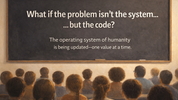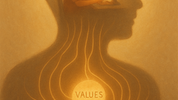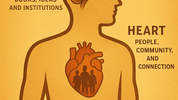Next time you are uploading a video or photograph of yourself or your child to social media – think deepfake.
What is Deepfake?
Deepfake is artificial media in which a person in an existing image or video is replaced with someone else's likeness. Faking video content is not new, but artificial intelligence (AI) is making it easier to create, especially as it is accessible with open-source software. The power of deepfake is making it very easy to manipulate and generate visual and audio content with a high potential to deceive. The question is, where and what will you, or your children, be seen doing and saying in the future?
It also brings into question what will we see our world's leaders and the news saying and doing next? Will it be true?
Deepfake is another question relating to how the evolution of AI should be, and it takes identity theft to a whole new level.
How Can We Trust And Detect Deepfake?
There are several strategies:
1) The original method was looking and listening for irregularities, but advances in the technology it making it virtually impossible to detect.
2) Apply developing AI detection against AI advances in the creation of deepfake. Setting AI against AI, regardless of rules and regulations, will always be a close-run race, and the winner will be the one with the largest financial budget.
3) Re-) learning to trust the knowledge within us. As neuroscience has known for a while, our brains process 400 billion bits of information a second, but we are only aware of 2,000 bits. This means we are only conscious of 0.000005% of the available data we are receiving. The question is, can we tap into our subconscious to find the answers, particularly as we have considerable untapped capacity? There are a growing number of ways to access our 'subconscious field'. Below is an effective and straightforward technique everyone can do.
Suspending judgement for a while, as judgment closes off curiosity and further discovery. I invite you to look at the thumbnail of the lady at the start of this short editorial video and do the following exercise, before pressing play:
Practice Exercise
Be somewhere where you don't mind standing up and being still and relaxed for a few moments.
- Stand up straight, evenly balanced on your feet and relax. Imagine strong roots shooting out your feet growing deep into the ground, to the centre of the earth, and spreading your roots wide, making you sturdy and grounded.
- Now imagine you are protected within a large shiny bright golden egg, which allows all negative and positive energy out and only positive energy in.
- As you stand straight and relaxed, if this is your first time, ask yourself a couple of yes - no test questions, e.g. "is my name Micky Mouse?" and note if your body moves either forwards or backwards. Now, ask yourself, "is my name [insert your real name]?" and note if your body moves either forward or back. Most people find, if the answer is yes, their body will tilt forward slightly and if no, it tilts backwards. It's usually subtle, but it's often there. If it does not tilt, the answer is neither yes or no.
- Before we ask any meaningful questions, we need to ensure its appropriate for us to ask the question. Therefore, while thinking about the question you are about to ask, ask the following; "Can I?", "May I?" and "Should I?" – if, and only if you get a tilt forward (yes) for all three questions should you proceed to ask the main question(s).
- Now, looking at the video thumbnail of the lady, ask "Is this a real video or a deepfake video?"
- Notice what answer you get, before pressing play and watching the short video editorial which includes real and fake images. Did you assess it correctly?
There is no limit of the yes and no questions we can ask.
Due to food intolerances, I regularly use this technique for testing food, by doing the above practice and placing the food against my heart and asking, "Is this good for my body now?"
This technique is one of many that utilises our natural kinesthesia to illuminate insight. This is dowsing; it is our natural human ability, we can all do it, just as we most of us can hear sounds and see the light. While many believe dowsing is merely searching for water using sticks or rods, it is, in fact, a means for us to access what our subconscious knows. It is vast and while there is no limit to what we can ask, on a consciousness level it is not always appropriate for us to know the answer to some questions, hence the importance of always asking "Can I?", "May I?" and "Should I?" before you ask. Just like the microscopic percentage of data we are conscious of, which we have got along with so far, having access to additional information needs to be respected and honoured.
This particular technique of using our body's, to dowse is known as body dowsing, it's the most natural method of dowsing – and the more we practice it, the higher the accuracy of our intuition. Given the advances in AI it’s time we rekindled our intuitive skills, if we are going to make wiser decisions going forward.
Additional Resources:
The intuitive mind is a sacred gift and the rational mind is a faithful servant. We have created a society that honors the servant and has forgotten the gift [Albert Einstein]





